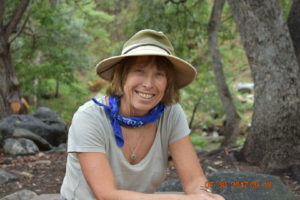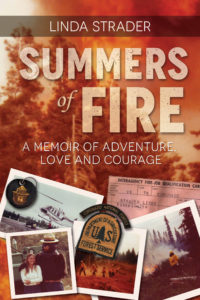 When asked to write this guest post about resiliency, I said without hesitation, “Sure! I’d be delighted to.”
When asked to write this guest post about resiliency, I said without hesitation, “Sure! I’d be delighted to.”
However, when I sat down at the computer to do so, I stared at the blank page on the screen. I had no idea how to start. I knew what resiliency meant, but I had no idea how to relate it to myself, even though many times over the years people have told me that I was resilient—a true survivor. However, having people believe that of you, and believing it of yourself, are two very different things.
Why couldn’t I see what others could see? Maybe because I’d been trained as a young child to never speak of accomplishments or achievements. That was bragging. My father also taught me that not only were the things I did not very special, but I wasn’t either.
My resiliency probably materialized over forty years ago, when I became one of the first women hired on a fire crew with the U.S. Forest Service. Not for a moment did I think that this job was anything out of the ordinary for a woman. I had no fear of hard work, and the idea of a job that let me be in nature seemed like a perfect fit. That I was the only woman on the crew didn’t faze me either. What I hadn’t expected was the hard work would be just one of the challenges I would face.
Over my seven year career, some guys on my crew flat out said they did not like a female in their midst. Others did so more covertly. That treatment annoyed me, but I dealt with it. Once management started preventing me from taking positions for which I was fully qualified, though, my career path became harder. However, the more difficult men made my job, the more I wanted it. I looked for and found alternative ways to continue doing what I loved to do. Was that resiliency? I tended to think of it more as tenacity. Whatever you call it, I experienced a terrible blow when the world I’d built collapsed at my feet.
That was the first time my life went all to hell. Somehow, I found a way around the obstacles. Was it easy to rebuild my life? Of course not. I relied heavily on therapy, which increased my determination to not give up. Again, I searched for alternatives, and found them. Life went great, for a while. But then life decided again to test the resilience I didn’t know I had. Next up, my second career and my marriage ended, and I lost my mom. Overwhelmed, I fell into another round of depression. Again, I sought therapy. And again, I gradually found more of the resilience I didn’t know I had, and rebuilt my life by looking for alternatives.
When writing my memoir about those times, a woman I met online offered to help me with grammar and storyline. We soon became friends. It was she who caught me minimizing my tenacity and resiliency.
I remember one conversation quite clearly:
“Why aren’t you writing about how difficult this was for you, and how you overcame it all?” she asked.
I paused. “Well, because anyone would have done what I did.”
“That’s where you’re wrong,” she said. “Many people would have spent their lives complaining about what happened to them, and doing nothing about it. You did something about it!”
Although it was difficult for me to hear this, I decided she had a good point.
Where did this drive and resiliency come from? Is it something you are born with, or something you learn? I believe my ability to find alternatives and move forward, even when every inch of my body didn’t want to, is how I survived what many might not have. I think discovering that if one approach or solution doesn’t work, it’s time to search for a new one. What do you think? Is it time for you to search for an alternative? Are you resilient? My guess is, you are. You just haven’t found out how to tap into it yet.
About the Author
Originally from Syracuse, New York, Ms. Strader moved to Prescott, Arizona with her family in 1972. In 1976, she became one of the first women on a U.S. Forest Service fire crew in the Santa Rita Mountains south of Tucson. Summers of Fire: A Memoir of Adventure, Love and Courage is her first book, released on May 1st, 2018 by Bedazzled Ink Publishing. She is working on a prequel. In addition to writing, Ms. Strader is a landscape architect, certified arborist, and watercolor artist. She currently lives in the same area where her Forest Service career began.
You can learn more about Linda and her book at Linda’s Blog and her Facebook Author Page. Connect with her on Twitter @desertplantlove. Her book is available for purchase at the following locations: Amazon US, Amazon UK, and Barnes & Noble.
